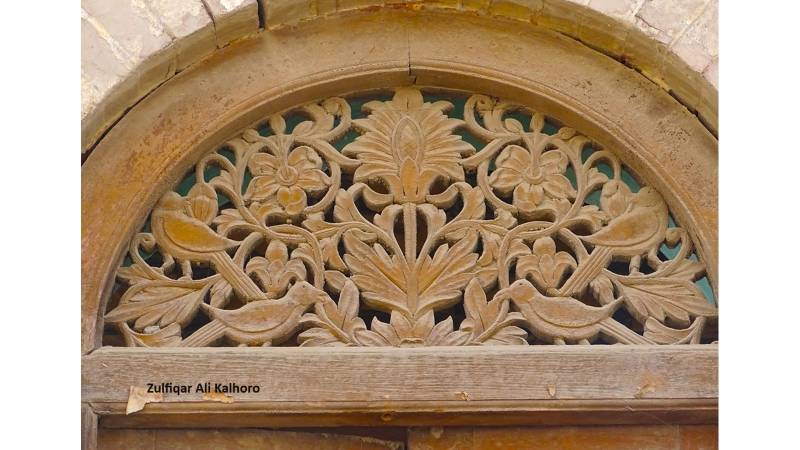
Note: All photos are by the author
Shikarpur is a city of arts and crafts. Its every street is a heritage street where there are havelis with exquisitely carved doorways, vividly engraved windows, intricately carved wooden façades, meticulously carved balconies, brightly painted wooden ceilings and dazzlingly designed brackets.
In those streets are also located shrines with wooden canopies, and mosques with painted wooden ceilings and carved doors. There are also temples and darbars in the streets, with spectacularly engraved doors with images of Hindu deities and Sikh gurus. All these structures reflect the aesthetics and opulence of the builders of Shikarpur. Shikarpuri masons and artisans built impressive structures which are decorated with religious and secular symbols – which have become the cultural identity of the city.
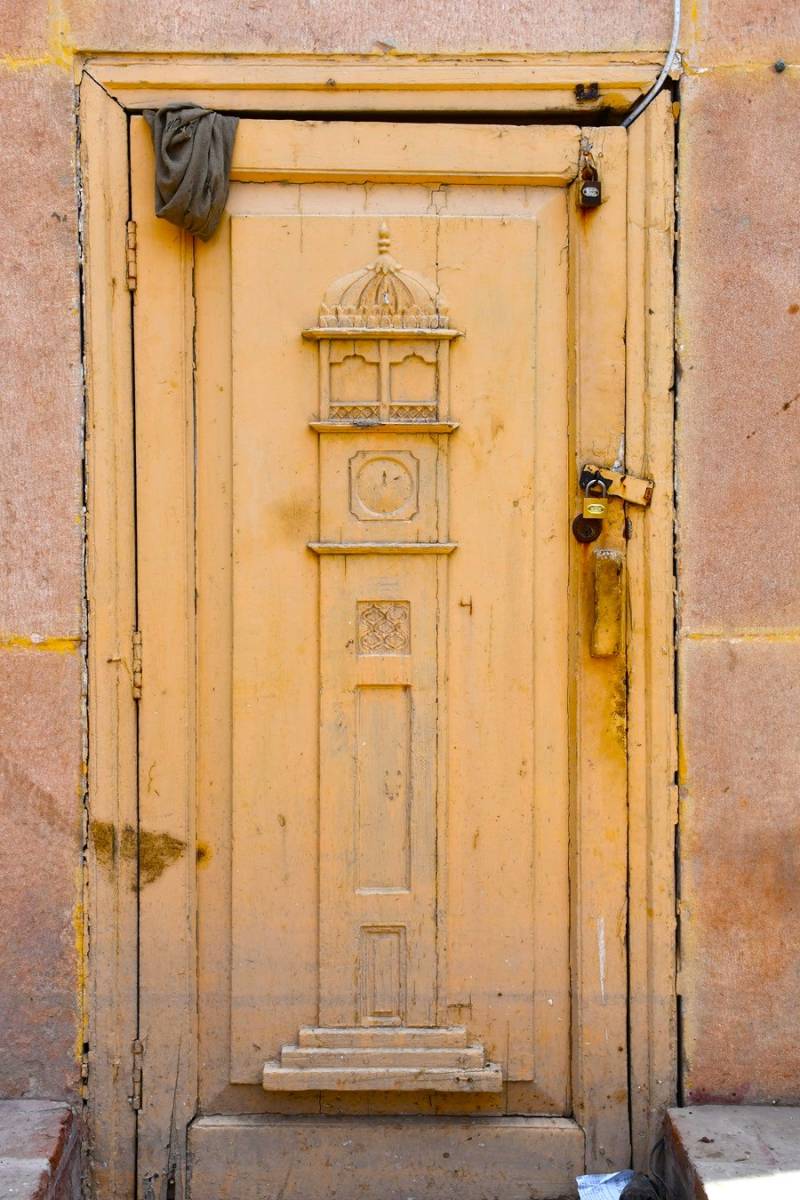
Shikarpur was once the very centre of woodwork or carpentry in upper Sindh. It is still home to skilled artisans in woodwork. Now most of the woodwork made by Shikarpuri artisans has been removed and sold. What is left behind is still testimony to Shikarpur’s once thriving wood carving industry.
There were many workshops in Shikarpur where not only locals but also artisans from other regions worked. It is believed that Shikarpuri businessmen and elites employed not only local masons and artists but also Sikh and Muslim craftsmen from Punjab to engrave wooden doors, ceilings, brackets, and balconies for their mosques, havelis, temples and darbars. Some Sikh artisans likely trained local artisans in the art of wood carving, particularly in the engraving of the images of Sikh Gurus. The Sikhs worked not only in Shikarpur but also in other districts of Sindh. I have seen the names of Sikh artists painted in a few tombs in Sindh - indications that show that Sikh artisans were employed by Sindhi elites and businessmen to work on their mansions and mausoleums.
Artisans from Babalani, Taibani, Muttalibani, Hakro, Bhutto and Dayo clans are all known for carpentry in Shikarpur. However, the Babalanis are the most skilled masters of wood carving in Shikarpur. The Babalanis are known after their ancestor Ustad Babal Khan Soomro, who was himself an eminent artisan. According to Muhbat Ali Babalani, Ustad Babal Khan had two brothers Abdul Muttalib and Muhammad Taib. The descendants of Ustad Babal Khan, Abdul Muttalib and Muhammad Taib are known as Babalani, Muttalibani, and Taibani respectively. These families continue the centuries-old tradition of woodcraft in Shikarpur.
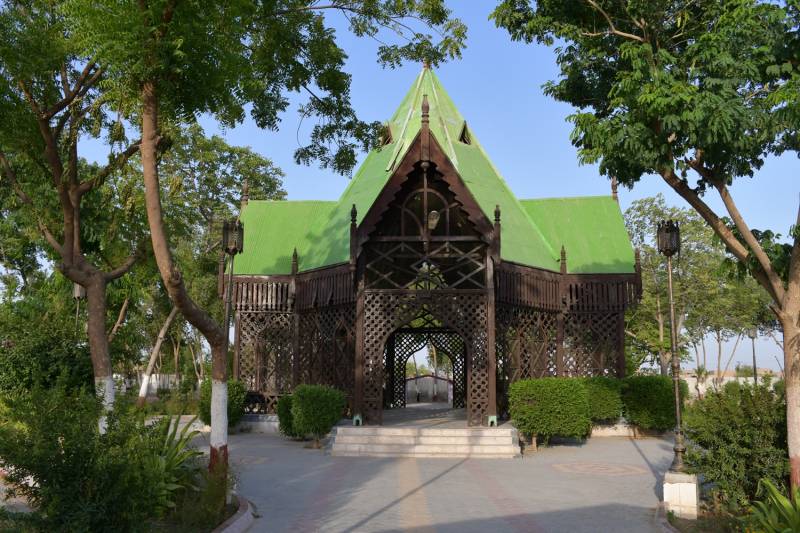
These families of craftsmen passed their skills and knowledge to younger generations. However, the Babalanis and Muttalibanis are more skilled artisans and they and their trained students continue their legacy.
The Babalanis make different types of furniture and a variety of wooden architectural elements. Apart from furniture, the Babalanis also make bull and horse carts, Tazia, Zaris, Alam and many other objects. The forefathers of the Babalanis used to make not only furniture and wooden architectural elements but also wooden images, combs, vases, plates and toys for children.
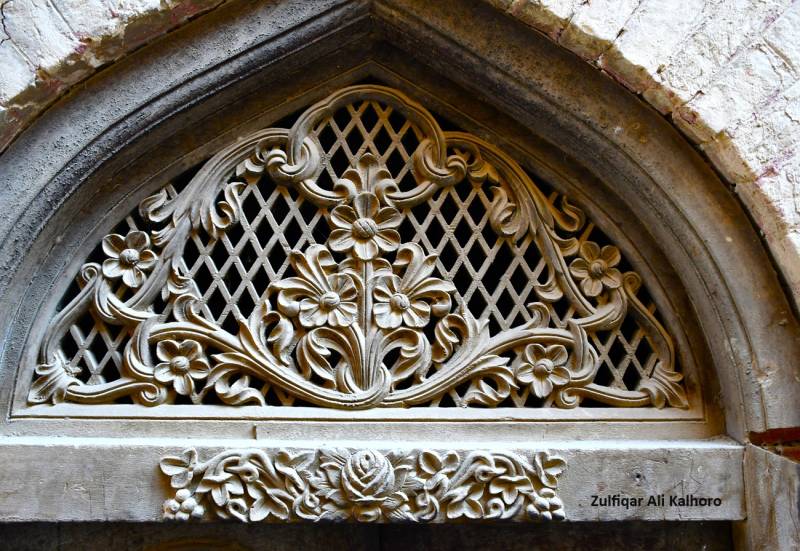
The work of the Babalanis can be seen not only in the houses, mosques, shrines, and Imambargahs but also in temples and darbars of Shikarpur city. Some of the most celebrated Babalani artisans and woodcarvers were Ustad Faqir Lal Muhammad, Ustad Ghulam Hussain, Ustad Khuda Bakhsh, Ustad Amir Bakhsh, Ustad Imam Bakhsh, Ustad Rahim Bakhsh, Ustad Ghulam Raza, Ustad Muhammad Munir, Ustad Muhammad Ilyas, Ustad Abdul Sami, Ustad Abdul Fatah, Ustad Muhammad Munir, and others.
The Muttalibanis are also famed artisans. Some of the prominent Muttalibani artisans were Ustad Abdul Rauf, Ustad Abdul Rashid and Ustad Abdul Hameed. I will discuss the woodcraft of the Muttalibanis of Shikarpur in another article.
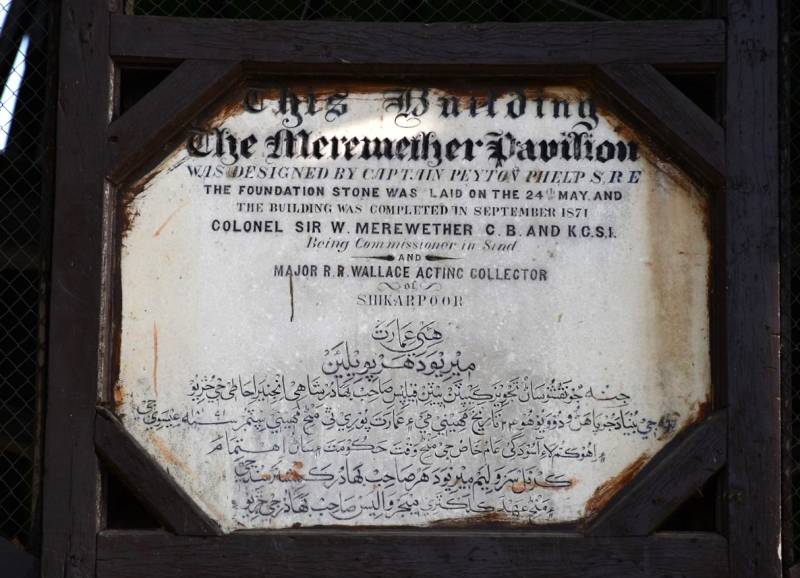
Muhbat Ali Babalani, a grandson of Ustad Amir Bakhsh, believes the most celebrated Babalani woodcarvers were Ghulam Hussain and his son Ustad Amir Bakhsh and others. Ustad Ghulam Hussain is believed to have built a wooden pavilion at Shahi Bagh in Shikarpur. It is called the Merewether Pavilion, which is a masterpiece of the British Raj and is the cultural identity of Shikarpur City. As per the inscription on the façade of the pavilion, "This building Merewether Pavilion was designed by Peyton Pheep. The foundation stone was laid on 24th May by Colonel Sir Merewether, being Commissioner in Sind, and Major R.R Wallace, Acting Collector of Shikarpoor.”
The building was completed in September 1871. The name of the artisan does not appear in the inscription. It is only preserved in the memories of Babalani artisans, who proudly claim that Ustad Ghulam Hussain Babalani worked on the Merewether Pavilion.
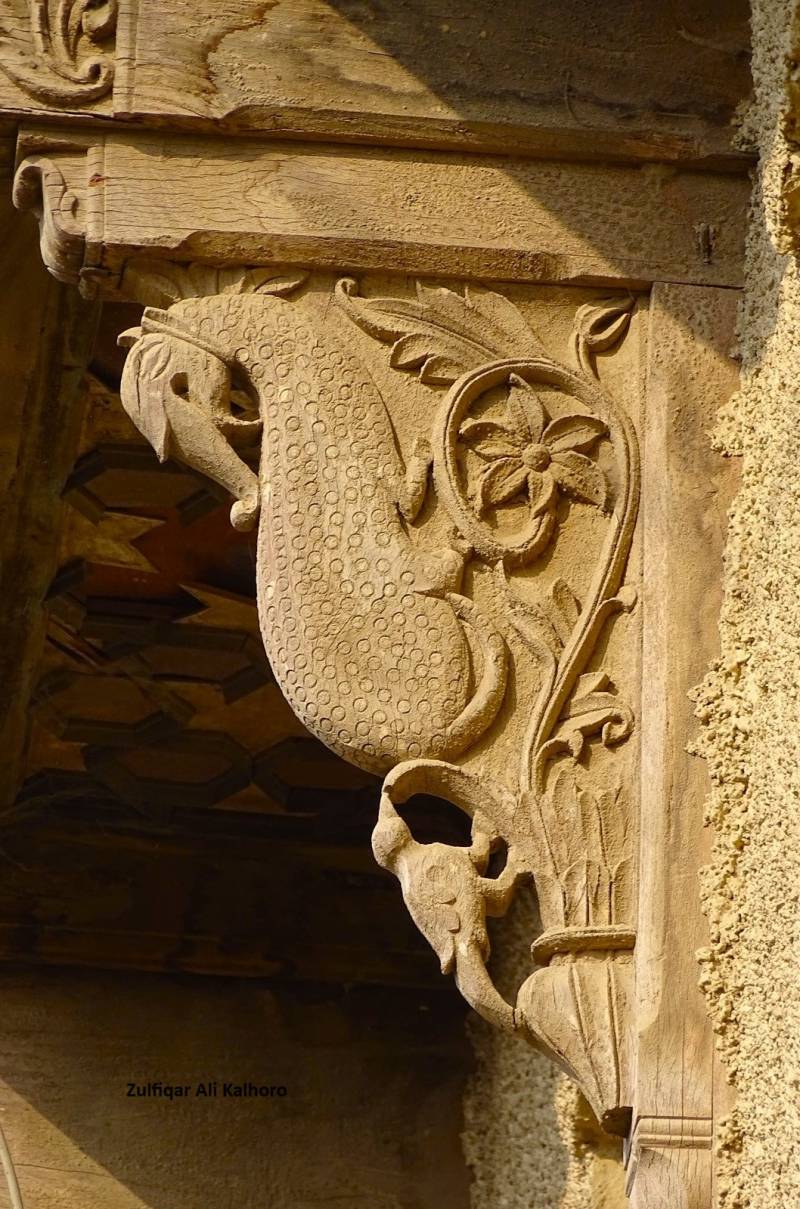
Apart from the Merewether Pavilion, Ustad Ghulam Hussain also made many impressive wooden canopies (Kathehras) that were built over the graves of the saints and Sufis in Shikarpur. He also made cradles and ornately carved wooden doors. He was also skilled in making lacquerware. His son Ustad Amir Bakhsh Babalani was also a famous artisan of wood carvings in Shikarpur. He made several wooden doors, balconies, windows, frames, brackets, and railings in the havelis in Shikarpur. He also made an impressive door of Ghanta Ghar or the clock tower of Shikarpur. This door is carved with an image of Ghanta Ghar which shows how skilled and trained wood carver Ustad Ameer Bakhsh Babalani was. He also made a few ornately carved Kathehras (canopies) in Sufi shrines in Shikarpur.
The most impressive Kathehro or wooden canopy was that of Haji Abdul Latif Shah Jilani, an eighteenth-century Qadiri sufi saint of Shikarpur, whose shrine is located on Sindh Wah Road near Lakhidar.
There are many pieces of workmanship to Ustad Ameer Bakhsh Babalani’s credit. He is also said to have made a beautiful wooden staircase in the Diwan Hotel in Shikarpur. It is said that the owner of the building became very pleased with his work and awarded him with an extra amount of money.
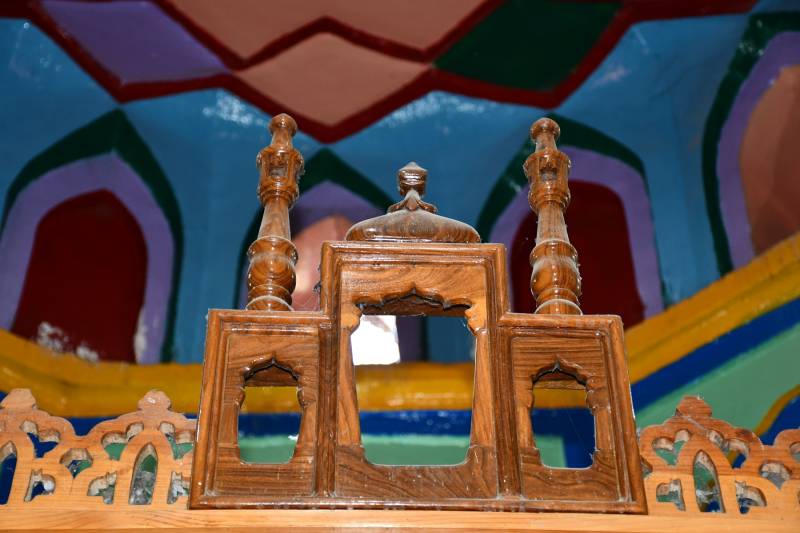
Ustad Ameer Bakhsh Babalani also made Tazias and Zari Mubarak which are placed in a few Imambargahs of Shikarpur City. The oldest Zari Mubarak of Imam Hussain (AS) made by Ustad Ameer Bakhsh Babalni can be seen at the Imambargah Karbala at Lakhidar. He also made wooden Alam Pak and carved Jhoola of Shahzada Ali Asghar (AS) which are also placed at Imambargh Karbala. Not only Babalanis but also Muttalibanis were also skilled artisans of Tazias and Zari Mubarak. Ustad Ameer Bakhsh died in 1940 leaving behind a number of his students to carry his legacy in woodcraft.
Ustad Muhammad Munir, the son of Ustad Ameer Bakhsh and father of Muhbat Ali Babalani was also a celebrated woodcarver and artisan of Shikarpur.
Nowadays, Barkat Ali, Oshaq Ali, and Salman Ali are continuing the tradition of their forefathers in Shikarpur. Oshaq Ali Babalani has recently made an impressive wooden canopy in the shrine of Manchar Shah. The wooden canopy over the grave of Manchar Shah is intricately carved. A distinctive feature of the canopy of the Manchar Shah is ornamentation. The wooden miniature mosque motif decorates the upper part of the canopy. It is interesting to see such wooden miniature mosque motifs in Sufi tombs in Shikarpur. Of late, he has also worked in the Shankar Bharti Ashram.
The Babalani artisans continue the wood carving tradition in Shikarpur. The authorities concerned should document the wooden carving art of the Babalanis and other artisan communities. Their work should be highlighted to educate the general public about the importance and role of the Babalani family of artisans in beautifying the buildings of Shikarpur City with their skilled hands and hammers!

